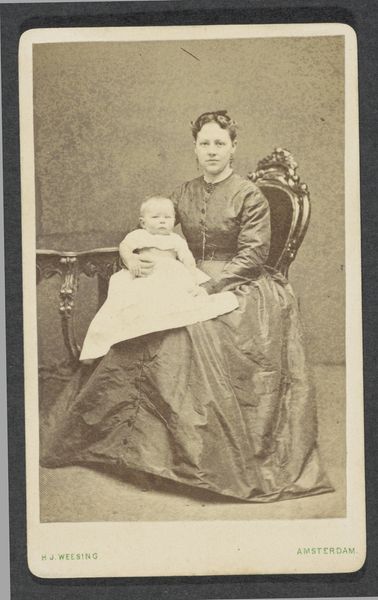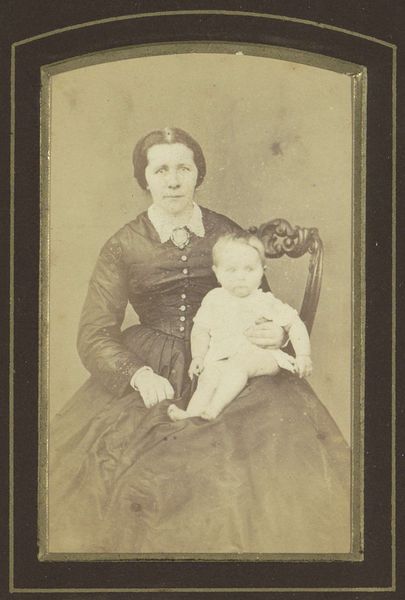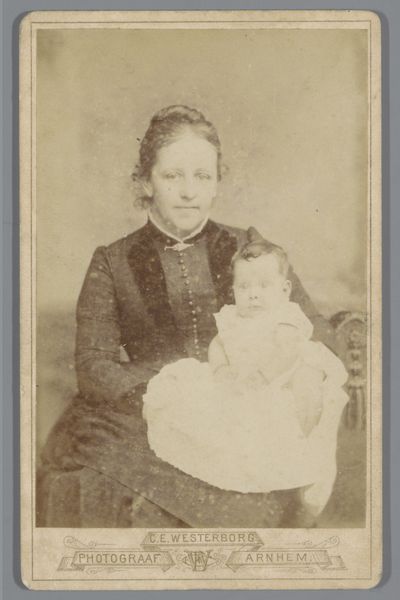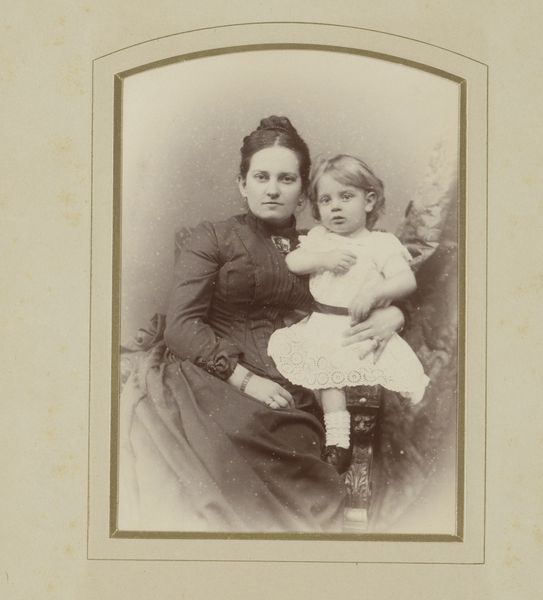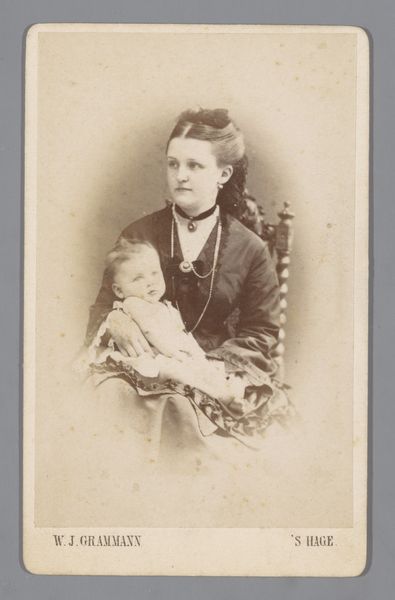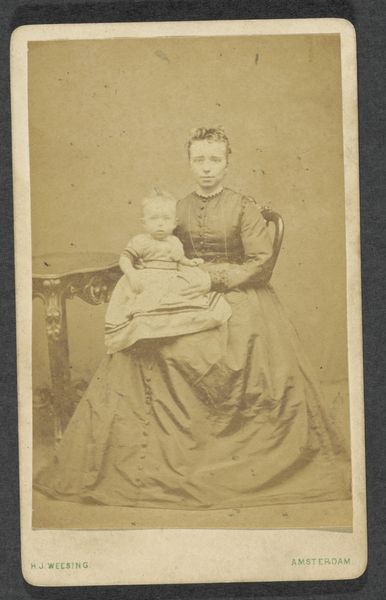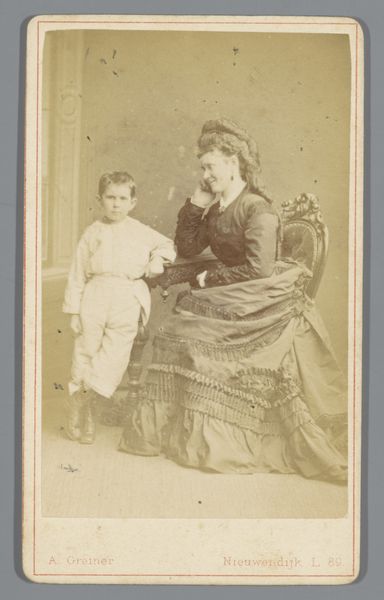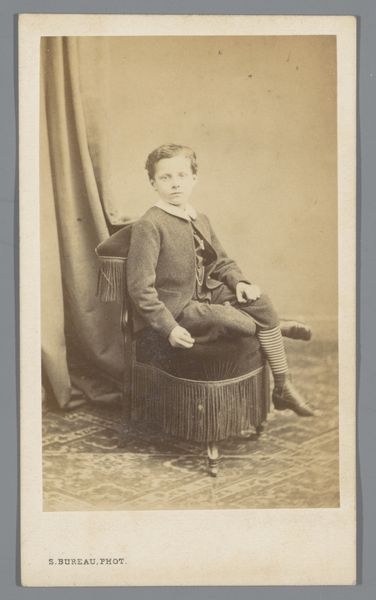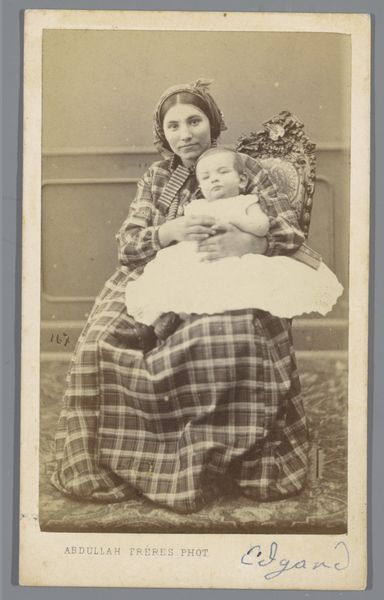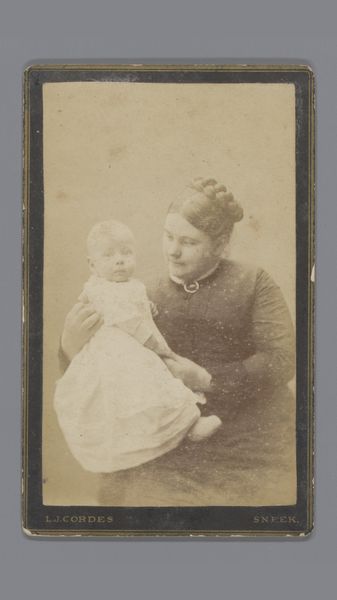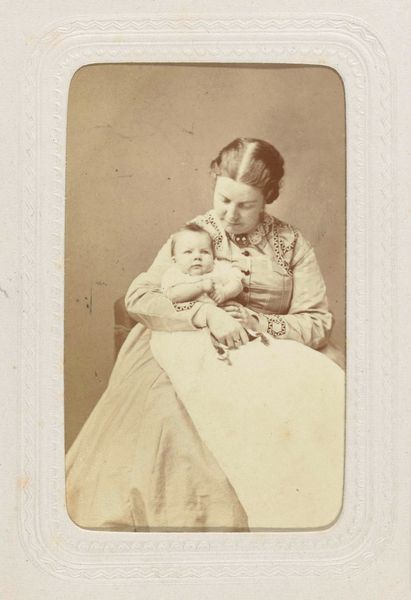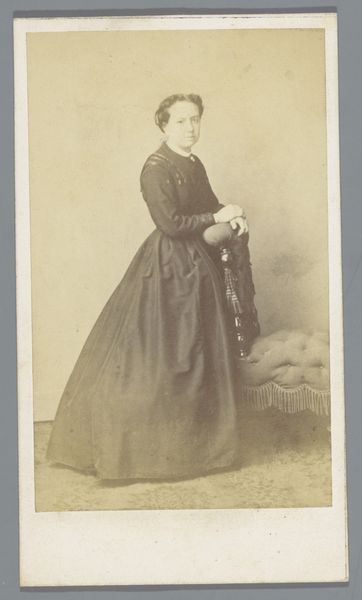
photography, gelatin-silver-print
#
portrait
#
mother
#
photography
#
gelatin-silver-print
#
19th century
Dimensions: height 105 mm, width 63 mm
Copyright: Rijks Museum: Open Domain
Curator: Here we have a gelatin silver print from the mid-19th century, between 1855 and 1885, attributed to August Rombaut. The piece is titled "Portret van een onbekende vrouw met kind", which translates to "Portrait of an Unknown Woman with Child". Editor: It strikes me as very still and intimate. The monochromatic palette and the slightly blurred focus lend a feeling of nostalgia. The child looks distinctly unhappy! Curator: Certainly, these studio portraits from that era were meticulously staged. It was quite an event for a family to commission one, indicating a certain level of social standing, so in that historical context, we should think of this as a formal and official depiction rather than an off-the-cuff emotional snapshot. Editor: I see layers of meaning. On the one hand, the Madonna and Child, which for centuries had been a popular devotional motif now transformed into a demonstration of bourgeois domesticity. On the other, the slightly morose expression on both faces can be linked with contemporary symbols of death, with death so common at this point. Is there here a melancholy awareness of temporal frailty, and are the little bunch of flowers the child is carrying symbolic? Curator: Possibly. We also have to understand the conventions around photographic portraiture at the time. Posing for these photographs required stillness for a long duration, which may account for the somber expressions. These were valuable possessions. And also they played a social function, legitimizing bourgeois domesticity in line with political conservatism. The growth of the middle classes led to more opportunities to have such work made for personal consumption and societal advancement. Editor: All true! Yet there's something about the overall composition – the woman's protective embrace, the child's slightly troubled gaze, the contrast between dark attire and lighter backgrounds that pulls at something deeper, suggesting shared fears and uncertainties which exist above politics or social conditions. It’s evocative of the ephemeral and vulnerable nature of life and relationships. Curator: Perhaps the emotional weight we read into it now reflects our contemporary perspective on family, different from the original intent but valid in its own way. It’s a conversation between then and now. Editor: Precisely! It is in that dialogue that these older photographs find fresh meanings.
Comments
No comments
Be the first to comment and join the conversation on the ultimate creative platform.
